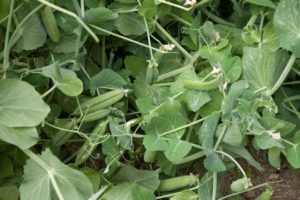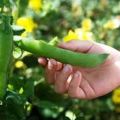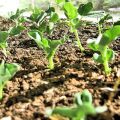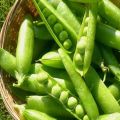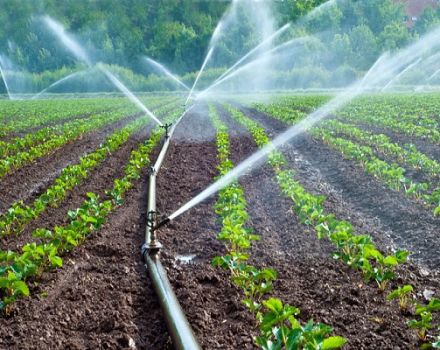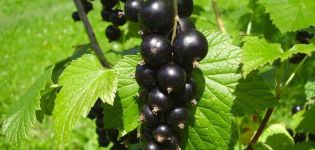How to plant peas on a windowsill at home
The health benefits of leguminous plants are known. It is good when you can enjoy juicy peas in winter, and for this you need to know how to plant peas at home and grow them. It is worth using this cultivation method even when it is not possible to deal with a summer cottage. A green garden on a windowsill or balcony is a wonderful way to replenish the diet with fresh vitamins and useful microelements. There is no need to be afraid of whether it is possible to grow peas at home. Even inexperienced gardeners can do this.
Growing pea seedlings
It is easy to grow peas on a windowsill at home, those who are engaged in agricultural technology of vegetable plants know about it. First, they choose those varieties that can bear fruit at home and have an excellent taste. In addition, you will need containers for planting and soil suitable for legumes.
Low-growing species are successfully grown in the home, so how to grow peas these varieties are easier. They do not take up much space at home; they can be placed not only on the balcony, but also on the windows.
Growing begins with the preparation of pea seedlings:
- early ripe Sugar variety;
- undersized Gribovsky;
- suitable for conservation Alpha;
- varieties Zhegalova 112.
Before sowing a vegetable plant, a number of preparatory measures are carried out related to seeds and soil.
Preparing beans for sowing
To obtain healthy seedlings, it is always important to select plants and flowers that are viable and can produce healthy fruit. Before sowing, pea beans are rejected.
If the seeds are damaged, covered with mold, then it is better not to leave them for planting. The rest of the beans are poured with salt solution. Old and unviable seeds will float, and good ones will sink to the bottom.
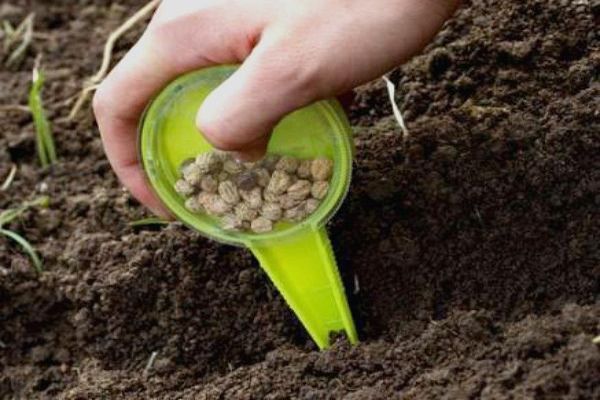
For disinfection, the beans need to be in a weak solution of potassium permanganate for 20-30 minutes. Boric acid is suitable for disinfection, 0.2 grams of which is dissolved in 1 liter of water. After the procedure, the peas are washed under running water and dried.
Growing peas at home requires soaking and germinating the seed material before planting. To do this, the beans are laid out on a damp cotton cloth and covered with the same piece of cloth on top. Springs will appear faster in a warm place. Sugar beans will hatch within 5-6 days with constant moisture.
Sowing pea beans for seedlings
How to plant peas at home: in a pot or in a common box - you should think about this in advance. Both containers are acceptable, but excess moisture may accumulate in the individual container, which will negatively affect the vegetation of the vegetable plant.It is also not worth planting in small cups, otherwise the planted bean will have to dive as it grows. It is optimal to use containers for growing.
Before planting peas at home, do not forget about preparing the soil. If planted in soil taken from the garden, then the plant can get sick. To destroy pathogenic microorganisms in the soil substrate, spill it with boiling water or potassium permanganate solution 2 weeks before planting the beans.
Time for sowing peas are chosen taking into account how many days the vegetable variety ripens. You can plant at home at any time of the year, since the plant also bears fruit on windowsills.
Sprouted peas are laid out in grooves to a depth of 2 centimeters at a distance of 5-10 centimeters from each other. The beans are lightly covered with earth and the boxes are covered with foil.
After 10-12 days, sprouts will appear when planting a vegetable:
- regularly ventilate;
- moisten as the top layer dries;
- are fed with mineral fertilizers.
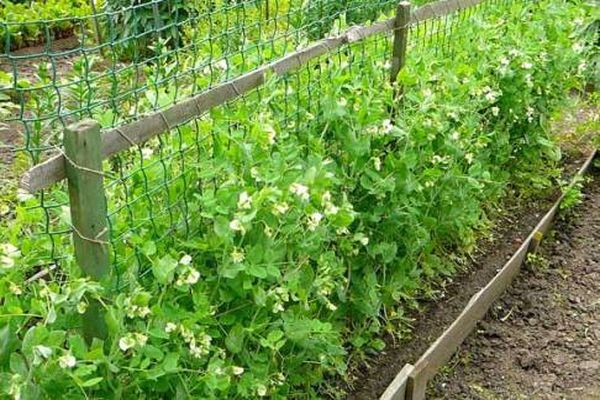
Most of all, vegetable seedlings need phosphorus, potassium, nitrogen.
Picking
If the peas grown in the apartment are planted densely, then the pick is required. It is necessary to prepare a separate container for plants; a container with individual cells is also suitable. Now it remains:
- fill the container with nutritious and loose soil;
- make a hole in the center of the container;
- carefully using a stick, remove the seedling of the plant and place it in the hole;
- sprinkle with earth.
It is not recommended to immediately expose containers with transplanted plants in the sun, since seedlings may die. After keeping for 1-3 days in the shade, put containers with legumes sprouts on well-lit windowsills.
Plant care
When growing peas at home, a number of rules are followed regarding the conditions for keeping and caring for a vegetable plant.
Lighting plays an important role in obtaining ripe beans, since the vegetable crop is a photophilous one.
The care and cultivation of a vegetable plant should be carried out competently, taking into account the peculiarities of the development of the culture, the timing of its ripening. Do not forget about moistening the soil, applying fertilizers... The plant loves soil that is well permeable to water and air, therefore, after watering, it is necessary to loosen the soil in the container. And it is better to remove seedlings prone to disease immediately so that the infection does not spread to healthy specimens.
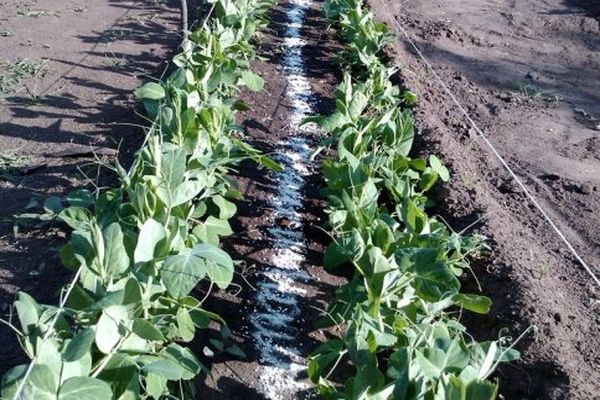
Lighting
A bean plant needs a lot of light. When there is enough of it in the summer, then you need to think about how to grow peas at home in winter, when the daylight hours are short. Peas grown in the shade will be pale and tasteless. And there will be no juiciness in the beans.
Therefore, to create a 12-hour daylight hours, fluorescent lamps or special phytolamps are placed over the plantings of legumes. Lighting devices are placed over containers with vegetable sprouts, maintaining a distance of 50 centimeters.
Watering peas
The beans need regular watering for juiciness. The soil must be well moistened, otherwise the plant will begin to dry out, and the fruits will not set well.
In order for the cultivation of peas at home to be successful, moderate watering is used for cultivating a vegetable crop as the topsoil dries out.
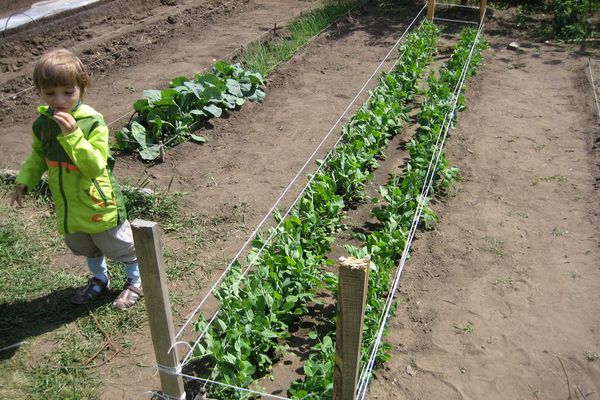
You can determine the condition of the soil with your fingers. If the soil is dry, then moistening with water at room temperature is organized. Taking tap water for irrigation is not recommended. Hard, it will cause a white coating to appear on the ground of the container. Standing and filtered water is suitable for watering seedlings. After moistening the soil, loosening is carried out to create conditions for air to penetrate the ground.
Support
The stem of leguminous plants is curly, therefore, without support, it will fall and intertwine with neighboring plants. The sprouts that have grown up to 10-15 centimeters require support.A mini-trellis is prepared on the windowsills by driving pegs along the edges of the container, and stretching strong threads between them in 3-5 rows.
Cultivating a plant on a loggia or balcony will allow you to stretch the net over the legume plantings, which will give the direction of growth. The cultivation will be successful, and you can feast on peas to your heart's content, picking peas from the stems on the supports.
Top dressing of peas
When the plant is planted in nutritious soil, it is necessary to feed the legumes only before flowering. Every 2 weeks, pour the nutrient solution into containers with peas. Fertilization of the land is carried out with complexes containing phosphorus and potassium. Less nitrogen is needed, because the element affects the increase in green mass, and not on fruiting.
It is best to take superphosphate - 10-15 grams, the same amount of potassium salt and dilute in 10 liters of water. This solution will saturate the plants with the elements necessary for flowering and the formation of peas in the pod.
Many gardeners use growth biostimulants such as HB-101 when growing peas at home. Planting legumes is fed with the drug once a week. Vegetable vegetation is faster. You can use the products as a foliar additive by spraying the leaves of the vegetable plant with the solution.
Harvesting
Depending on the selected variety of ripeness, peas on the windows reach:
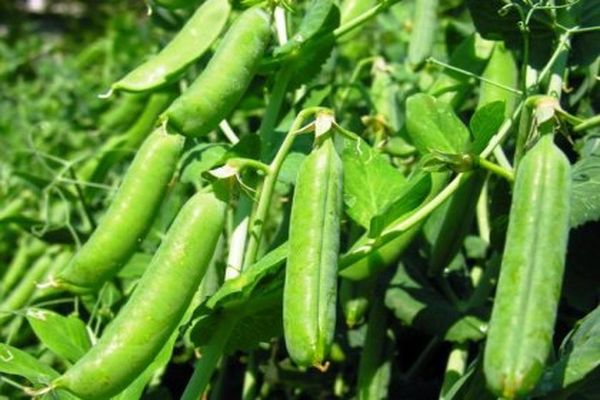
- early sugar in 55–65 days for the use of scoops, for seeds - 90–100;
- shelling species - Maisky, Pobeditel, for the preparation of a canned product - 45-60 days, for grain - 75-85 days.
As soon as the shoulder blades begin to ripen, they are harvested. Then the rest of the pods will quickly fill with juicy peas.
When harvesting, do not tug on the stems so as not to damage the plant. Holding the shoots, carefully remove the green blades. You can harvest within 2 months.
Reviews about growing peas at home
Many people doubt the cultivation of peas on windowsills, and even in winter. How to grow peas at home, when there is so little light, and it is not always warm in city apartments. But innovators are successfully cultivating vegetable crops not only on the balcony, but also on the windows in winter.
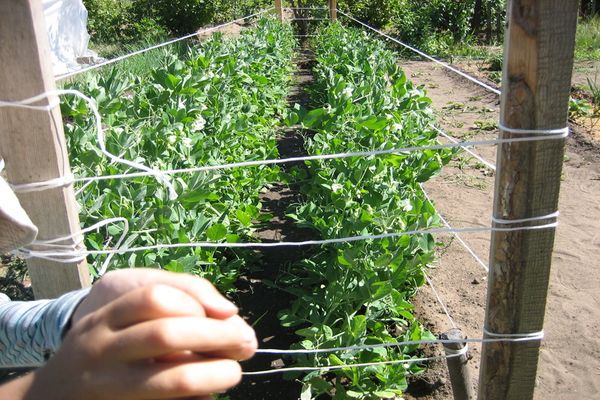
Sergey, Novosibirsk:
“Our family has no opportunity to keep the dacha. We decided to arrange a mini-garden on the windowsill, since they are wide and well lit here. The first year of the experience of growing peas failed. But we didn’t quit. We reacted to the planting correctly, and in the winter feasted on fresh peas. Children were especially happy ”.
Natalia, Moscow:
“Vitamins are so lacking in winter. And so I decided to organize a vegetable garden on a warm balcony. I started with dill and onions. And then I switched to legumes. It was difficult at the beginning, not all the seeds germinated, and the plants developed poorly. But then she got used to it, bought phytolamps. And the peas do not need special care. Water and loosen the earth. And now all winter I collect scoops with fresh vitamins. Although, of course, the harvest is not very large, but this is enough to feel the taste of summer in winter. "
